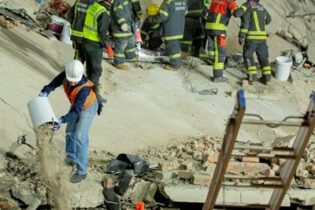Joblessness and low economic growth are chief among South Africa’s most pressing issues. In the former, overall – according to the latest QLFS – the country has an unemployment rate of 34,5%, while among young people aged between 25 – 34 it is 42,1%.
By Kgomotso Tolamo Programme Manager, Productive Cities These are extraordinarily high numbers, and against the backdrop of our economic growth rate of 2% this year, initiatives that go some way to get people, especially youth, to work are vital. Programmes such as the Expanded Public Works Programme (EPWP) are a necessary and needed effort. Led by the National Department of Public Works and Infrastructure, the EPWP is implemented through a collaboration among government, the private sector, and communities. Most recently, the South African Cities Network (SACN) released the 2020/2021 State of the EPWP in South African Cities. In addition to reporting on the number of work opportunities that the country’s nine biggest cities have created, the report also measures their performance based on 10 key indicators. In the SACN’s latest report, it has been determined that South African Cities remain strong drivers of providing work opportunities. Despite the challenges experienced, cities continue to support a reduction in unemployment through provision of exit strategies. This allows those contracted on a short term basis to be better positioned to graduate into longer-term income generation opportunities; albeit much lesser than needed. Considering the unemployment crisis, the yardstick used to measure the effectiveness of public employment programmes more broadly, should be the number of individuals graduating into more permanent income generation activities. Although cities work in earnest to continue providing work opportunities throughout the various lockdowns, the 2020/2021 reporting period has not been without its challenges. Where infrastructure projects accounted for the lion’s share of work opportunities before the pandemic set in – in addition to environmental and social sector jobs – due to the hard lockdowns, this industry came to a sharp halt. This has meant that many of those intended to work on construction sites were redeployed to Covid-19 related work opportunities, such as temperature checking at the entrance to buildings, or tourism work opportunities as was the case in Nelson Mandela Bay Municipality. Of course, this was a positive step, as without redeployment those scheduled for EPWP work opportunities would have had very limited income generation opportunities during various lockdown levels. But it was not a catch-all. Infrastructure development remains a key priority for both economic recovery and for EPWP work opportunities. As is noted in the National Infrastructure Plan, public infrastructure investment is central to achieving greater productivity and competitiveness, reducing spatial inequality, and supporting the emergence of new job creating sectors. It is unsurprising then that this sector remains a significant contributor to work opportunities in the EPWP; it contributed 26 407 work opportunities during the reporting period.Similar to previous Quarterly Labour Force Surveys (QLFS), Q1 2022 QLFS highlighted that unemployment is highest among those with lower school completion rates and limited accredited training; 39.8% of those with less than a matric are unemployed contrasted with an unemployment rate of 12,6% for graduates.
Affirming the importance of complementing public employment programmes with further training and skills development, cities have progressively been leveraging the EPWP to form partnerships that provide participants with the opportunity to receive accredited training in artisanal trades such as plumbing. The City of Ekurhuleni is one such example. It has provided training opportunities through its Vuk’uphile programme (construction skills and skills on running a construction company) as well as the Plumbers Training project which provided an NQF level 3 qualification in plumbing. Similarly, the Cities of Cape Town, Johannesburg and EThekwini have also leveraged partnerships with NGOs, educational institutions as well as the private sector to provide accredited training opportunities. Significant gaps exist in low-entry fields such as those in the artisanal sectors. The training opportunities provided by cities through EPWP projects demonstrate the utility of public employment programmes in meaningfully narrowing this gap. To complement this, promoting a culture of artisanal skills is critical to ensuring increased participation. Skills in this sector – such as plumbers, carpenters, fitters, joiners and brick-layers – are vastly underrepresented and it is critical to create initial work experiences, especially for youth. This firmly aligns with the Department of Higher Education and Training’s (DHET) increased emphasis on artisanal skills development reflected in its goal to increase the number of learners entering artisanal programmes to 22 000 in 2022/23. Complementing public employment programmes with accredited training allows individuals to contribute to meeting their most basic immediate needs, while also investing their long-term capability to create a livelihood for themselves. In 2020/21, 938 688 work opportunities were created through 13 496 EPWP projects, which translated to R9.3 billion in income support being paid to EPWP participants; however, the number of those trained pales in comparison. Several cities highlight the need for additional financial assistance to be specifically targeted towards training. As well as formation of partnerships with the education and private sectors as being instrumental to improving the number of participants receiving training. This is key to improving the impact of public employment programmes more broadly. Cities have demonstrated significant innovation, resilience, and commitment towards increasing work opportunities during a very challenging period. Through their respective city reports there is clear articulation of the tools needed to leverage the EPWP in order to build back better. With close to 8-million people without work, programmes like the EPWP are needed more than ever. They provide an important springboard into employment and training, its full potential can only be realised through an ecosystem that creates pathways for graduation out of the programme and into dignified, long term income generation activities. This graduation strategy needs to be embedded within an ecosystem of actors, whose contributions are tied directly to the desired pathways for EPWP participants. Leveraging programmes such as the EPWP as a vehicle towards progressively reduced unemployment is unattainable without collaborations and partnerships between whole-of-government and all-of-society.






